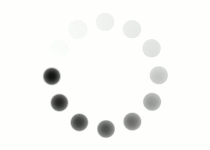Do you remember the elements of art and the principles of design? Take this little quiz and see how you do.

1. Which is an element of art?
- Unity
- Line
- Proportion
- Variety
Line is an element of art, and variations in line weight can add movement and interest to an artwork. Unity, variety, and proportion are all principles of design.
Line is an element of art, and variations in line weight can add movement and interest to an artwork. Unity, variety, and proportion are all principles of design.
Line is an element of art, and variations in line weight can add movement and interest to an artwork. Unity, variety, and proportion are all principles of design.
Line is an element of art, and variations in line weight can add movement and interest to an artwork. Unity, variety, and proportion are all principles of design.
2. Which is a principle of design?
- Form
- Shape
- Color
- Balance
Balance is a principle of design and can be used within a composition to create a feeling of comfort or unease for a viewer depending on the intention of the artist. Form, shape, and color are all elements of art.
Balance is a principle of design and can be used within a composition to create a feeling of comfort or unease for a viewer depending on the intention of the artist. Form, shape, and color are all elements of art.
Balance is a principle of design and can be used within a composition to create a feeling of comfort or unease for a viewer depending on the intention of the artist. Form, shape, and color are all elements of art.
Balance is a principle of design and can be used within a composition to create a feeling of comfort or unease for a viewer depending on the intention of the artist. Form, shape, and color are all elements of art.
3. Which of these are principles of design?
- Emphasis
- Contrast
- Rhythm
- All of these
Emphasis, contrast, and rhythm are all elements of design that can be used to create a focal point and help the viewer’s eyes move through an artwork
Emphasis, contrast, and rhythm are all elements of design that can be used to create a focal point and help the viewer’s eyes move through an artwork
Emphasis, contrast, and rhythm are all elements of design that can be used to create a focal point and help the viewer’s eyes move through an artwork
Emphasis, contrast, and rhythm are all elements of design that can be used to create a focal point and help the viewer’s eyes move through an artwork
Summary
Questions answered correctly:
Questions answered incorrectly:
How did you do? Were you able to distinguish between elements of art and principles of design? Click through the following sections to review each element of art and how it is typically used in the visual arts.
Artists use color for many different reasons in the visual arts. Colors are categorized as primary, secondary, or tertiary colors. Certain combinations of colors are known to be visually pleasing (like complementary colors or analogous color sets). This is called Color Theory. Colors can also be used to communicate a mood or a feeling. For example, the color blue tends to communicate feelings of cold and sadness, while the color yellow tends to make the viewer feel warm and happy.
Shapes are two-dimensional, or flat, enclosed areas of space. They are typically used to construct the subject of an artwork. They can be geometric (square, circle, triangle) or organic (a shape found in nature).
Forms are three-dimensional enclosed areas of space and are typically discussed when talking about sculptures or other artworks that can be viewed from multiple angles. However, form is used in drawings and other two-dimensional artworks by adding value to shapes to give the illusion of mass.
Texture is used in artwork to make the artistic representation seem more realistic. There are two classifications of texture, real and implied. Real texture is texture that you can feel, while implied texture is a texture you can see.
Value is the range of darks and lights in an artwork. It can be used to give the illusion of mass (form) or to make artwork appear darker or lighter to the viewer. Value is often used to add drama to artwork by making it appear darker and more mysterious or to create a focal point by making one area much lighter (or darker) than the rest of the artwork.
Line is used in artwork to construct the subject, to imply movement, and to guide the viewer’s eyes through the work. Lines vary by weight (or thickness), which can make a subject appear heavier or lighter. Straight, heavy lines make artwork appear heavy and rigid, while flowing, light lines give it more of a whimsical and airy appearance.
Space is divided into positive and negative space. Positive space is the area occupied by objects, or the subject, of an artwork. Negative space is the space around the object(s). Having a lot of negative space makes the artwork feel open or makes the subject seem small; very little negative space makes the artwork feel cramped, and the subject appear to be very large.
